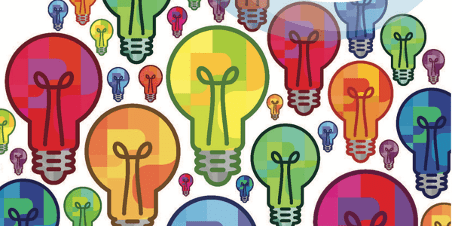How the digital workplace facilitates innovation

The importance of innovation
Innovation is a big-ticket item for organizations needing to deliver new services and products to customers, or those wanting to transform the way they operate by introducing new processes or doing things differently.
Innovation tends to be something to which all organizations aspire; however, the commitment to innovation can vary dramatically from sector to sector and from organization to organization. But whether you’re a start-up in a fast-moving industry or a mature monolithic organization in an undynamic sector, there will be likely be some commitment to innovation somewhere. And almost always the digital workplace has an active role to play.
New research from DWG
A new DWG members-only research report titled “Harnessing the creativity of your workforce: How digital workplaces facilitate innovation” takes a deep dive into the role the digital workplace plays in supporting and driving innovation. At the top level it identifies three main, but overlapping, roles for the digital workplace in innovation:
- facilitating innovation with tools that effectively manage employee ideas, along with related processes such as collaboration
- acting as a catalyst and focus for innovation in its own right – the digital workplace is an innovative concept
- as a platform to nurture a culture of innovation and encourage the right mindset.
While the report goes on to explore all three items, it mostly focuses on facilitating innovation, principally through ideation – the management of ideas from right across the organization.
Tapping the wisdom of the workforce
I’ve always been fascinated by how employee ideas can contribute to innovation. They can be an untapped and exciting source of wisdom and creativity; the story of how an employee idea helped shape the Post-It note at 3M is well-known and compelling.
Every day in every organization somewhere an employee will be having a lightbulb or eureka moment in the form of a great idea, or gaining insights that can shape useful ideas by spending time with customers or through knowing a process or product inside out. These distributed ideas and knowledge can have enormous value; the question is how do you gather and leverage them so that they turn into actual projects and innovations?
When you use the digital workplace to gather and manage ideas, either through an ideation platform or with social tools, it brings additional benefits too, including driving adoption of the digital workplace, engaging employees who feel valued and inspiring a culture of innovation. Often these elements are as important for the digital workplace teams behind an ideation programme, although really the ideas need to be the primary outcome.
Getting it right
While ideation is very exciting, many initiatives fail, often because of the execution. Ideation is one of those areas where the devil really is in the detail. In the report, we look at the factors that need to be in place to maximize the chances across three main areas:
- People: elements such as culture, incentives and constraints can impact how people engage with your innovation initiative.
- Process: the different process steps you follow for your initiative.
- Platform: the technology platform and format you use to manage ideas.
For each of these three areas the report goes into considerable detail, for example setting out our ideal nine-step process for ideation, the critical (and advantageous) features of an ideation platform and also the “people” elements. These are usually the most important factors:
- giving everyone access so there is a level playing field
- leveraging diversity
- having the right culture so employees feel engaged, encouraged and safe in contributing ideas and experimenting
- building up trust to ensure the initiative is a success
- applying the right constraints to support and encourage contributions
- ensuring there are appropriate incentives for employees to contribute
- ensuring there is the right training and mindset, reflected in the digital literacy of the workforce
- having the right roles associated with ideation
- removing any other barriers to entry with the right platform and process.
The importance of communication
One of the most important aspects of ideation is clear communication before, during and after an initiative. Having clarity about the reasons behind an ideation challenge and what will happen in a programme will help to drive the trust you need to support good adoption – sometimes it can feel like a big deal to submit an idea that is in your head to experts, managers and potentially the entire workforce, and to have your name attached to it.
People also need to feel that they are valued and that their effort (and potentially future efforts) have been worthwhile. That’s why giving individual feedback about an idea (whether successful or unsuccessful) is important as well as communicating back about ideas that have come to fruition. Nobody wants to feel as if their idea has disappeared into a black hole or that management didn’t really care about it.
The power of ideation
When ideation is carried out in the right way it can be a powerful tool, not only driving digital workplace adoption and encouraging collaboration, but also potentially finding that one idea that can make all the difference! Whether it’s a multi-million dollar product for the market, or just a modest change to operations that makes the working day that little bit easier or improves customer service, ideation is well worth the effort.
When you can operationalize the management of ideas and really harness employee creativity that continues to fuel innovation, ideation can be a true source of competitive advantage. Download the free excerpt from the report to give you some tips on how to make innovation happen.
Take the next step…
Harnessing the creativity of your workforce: How digital workplaces facilitate innovation
Download the free report excerpt
Categorised in: Digital workplace, Research reports

